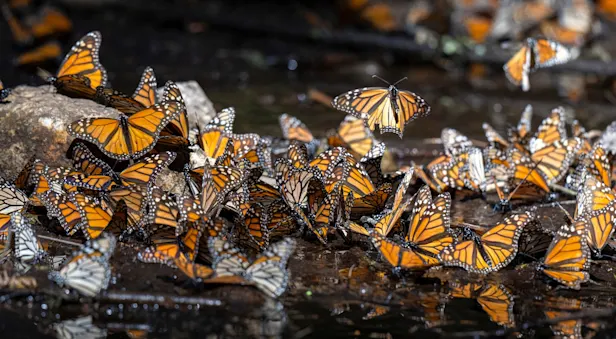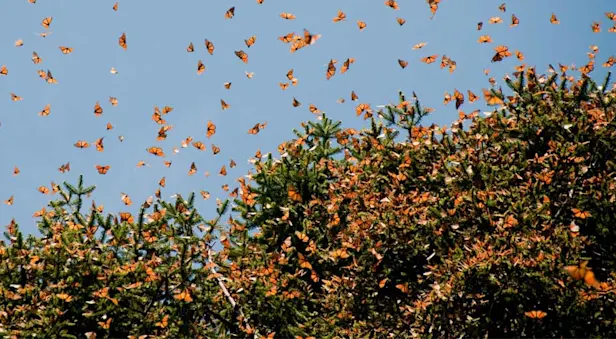
Know Before You Go


Conservation of Monarch Butterflies
When standing in the forest surrounded by millions and millions of monarchs draped from tree limbs, it can be hard to imagine that these butterflies are at risk. But by some estimates, their population has declined by 90 percent since the mid-1990s. Three of the main reasons for this decline are illegal logging near their sanctuaries in Mexico, the loss of host and nectar plants such as milkweed and other wildflowers because of an increased use of herbicide in agricultural areas in the Great Plains, and a changing climate that causes extreme weather events along their migration route.
For several decades, even within the monarch biosphere reserves, illegal logging decimated the forests the monarchs were relying on. With thousands, if not millions, of butterflies hibernating on a single tree, the loss of a few acres can be devastating to the overall population. However, enforcement has increased, and illegal logging has been greatly reduced within the reserves. There is more of a risk now from legal logging in the surrounding private forests. These acres of trees, which provide much-needed income for local communities, serve as temperature buffers that create the cool climate the monarchs need for hibernation, and protect them from the full brunt of rain and snowstorms and the intense effects of the sun.
In the United States and Canada, these butterflies also face habitat destruction caused by humans. The building of roadways, developments of infrastructure, and increased land used for agriculture is creating an environment that makes monarch habitation impossible. Herbicides used in farming kill the milkweed that is the only food of the monarch caterpillar. Herbicides also kill many of the flowers that adult monarchs need to fuel their return to Mexico in the fall.
The Good News for Monarch Butterfly Conservation
Mexico has worked at preserving 63 million acres in more than 170 protected natural areas, including 66 national parks and 41 biosphere reserves. The government has banned logging in all of the overwintering sites in Mexico, though lumber is still harvested from the surrounding buffer zones, and illegal logging within the reserves continues to occur but on a much smaller scale than in the past.
Monarch populations rebound quickly when conditions are right. For example, in January 2002, a single storm killed millions of North America’s migratory monarchs. Even though nearly 70 percent of the monarchs were killed during this period, amazingly, it took only one year for the population to recover. Also, with recent coordinated international efforts to increase protections for butterfly habitat all along the migration route, their numbers have been increasing slightly for the last few years.Header Credit: Astrid Frisch

































